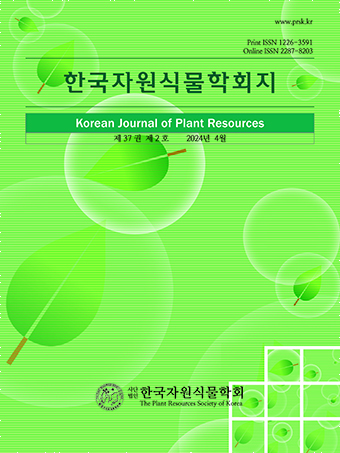Research Article
Abstract
References
Information
Park, B.J., J.J. Kim, J.G. Byeon, K. Cheon, S.H. Joo, and Y.G. Lee. 2016. The classification of forest community and character of stand structure in Mt. Myeonbong-Focused on Research Forest in Kyungpook National University, Cheongsong-. J. Korean Soc. For. Sci. 105(4):391-400 (in Korean).
10.14578/jkfs.2016.105.4.391- Publisher :The Plant Resources Society of Korea
- Publisher(Ko) :한국자원식물학회
- Journal Title :Korean Journal of Plant Resources
- Journal Title(Ko) :한국자원식물학회지
- Volume : 32
- No :4
- Pages :325-337
- Received Date : 2019-03-27
- Revised Date : 2019-05-31
- Accepted Date : 2019-06-26
- DOI :https://doi.org/10.7732/kjpr.2019.32.4.325




 Korean Journal of Plant Resources
Korean Journal of Plant Resources







